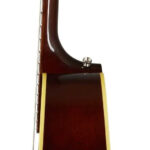AC/DC’s “Back in Black” isn’t just an iconic rock anthem; it’s also a fantastic starting point for guitarists. Its powerful riffs and driving rhythm are built upon simple, yet effective guitar chords, making it an accessible and rewarding song for beginners to learn. If you’re ready to rock, this lesson will guide you through playing the “Back in Black” guitar chords, focusing on easy-to-grasp open chords and power chords.
Gear Up for Black: Achieving the Iconic AC/DC Tone
To truly capture the spirit of “Back in Black,” understanding the gear that shapes AC/DC’s signature sound is key. While replicating Angus Young’s legendary setup perfectly might be ambitious for beginners, knowing the essentials helps you get in the right ballpark.
Angus is renowned for his use of Gibson SG guitars, prized for their bright, biting tone and comfortable playability. Paired with the raw power of Marshall amplifiers, particularly the JMP100 Super Lead, you get that classic AC/DC crunch. These amps, known for their powerful tube saturation, deliver the punch and clarity that define their sound.
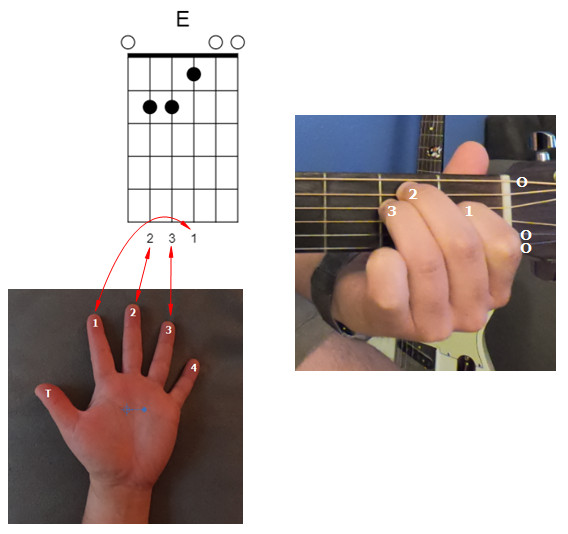 Angus Young playing a Gibson SG guitar
Angus Young playing a Gibson SG guitar
However, you don’t need a wall of Marshall stacks to learn “Back in Black” at home. A more practical approach for most guitarists is a combo amplifier with EL34 tubes, common in many Marshall and similar style amps. These offer a taste of that British tube amp tone at lower volumes, suitable for bedroom practice or smaller gigs. Crucially, remember that AC/DC’s guitar tone, while powerful, isn’t excessively distorted. Many players mistakenly use too much gain, muddying the sound. Aim for a crunchy, articulate tone where you can still hear the distinct notes within the chords and riffs. Think more classic rock overdrive than heavy metal distortion to nail that authentic “Back in Black” vibe.
Decoding the Chords: Simple Building Blocks of Rock
“Back in Black” cleverly utilizes a combination of open chords and power chords. Open chords, especially in the verse, provide a full, resonant foundation, while power chords in the chorus inject raw energy and drive. Mastering these basic chord types is fundamental to playing not just this song, but countless rock and roll classics.
Verse Chords: Open Chords in the Key of E
The verses of “Back in Black” are built around a simple and effective chord progression in the key of E major. This progression uses three open chords: E major, D major, and A major. These are among the first chords many guitarists learn, and for good reason – they are foundational and versatile.
The verse progression follows a “1-b7-4” pattern in Nashville Number System. In the key of E, ‘1’ is E, ‘b7’ (flat 7) is D, and ‘4’ is A. Understanding this numerical system isn’t crucial for playing the song, but it helps you grasp the underlying music theory and how chords relate to each other within a key.
Here are the chord diagrams for the open chords used in the verse:
- E Major:
 Angus Young playing a Gibson SG guitar
Angus Young playing a Gibson SG guitar
- D Major:
 D Major Open Chord Diagram
D Major Open Chord Diagram
- A Major:
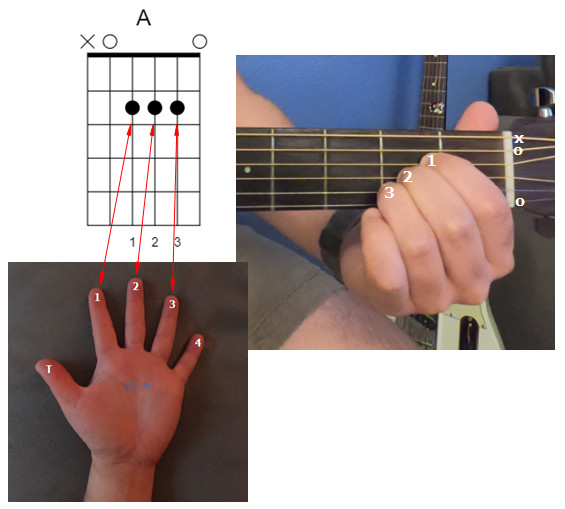 A Major Open Chord Diagram
A Major Open Chord Diagram
In the verse, you’ll typically play the E chord once, followed by the D chord three times, and then the A chord three times. This repeating sequence creates the song’s signature groove.
Chorus Chords: Power Chords for Maximum Impact
The chorus of “Back in Black” shifts gears, injecting more power and intensity using power chords. While the verse chords are full triads, power chords are simpler two-note chords (sometimes three with octave) that are neither major nor minor, making them incredibly versatile and powerful, especially in rock music. The chorus feels like it shifts to the key of A major.
The chorus progression uses the following power chords and open chords: A power chord, E power chord, B power chord, G major, and D major. In the key of A, the chorus progression follows a “1-5-2” pattern (A-E-B) and then resolves with a “b7-4-1” pattern (G-D-A).
Here are the chord diagrams for the power chords and additional open chords used in the chorus:
- A Power Chord:
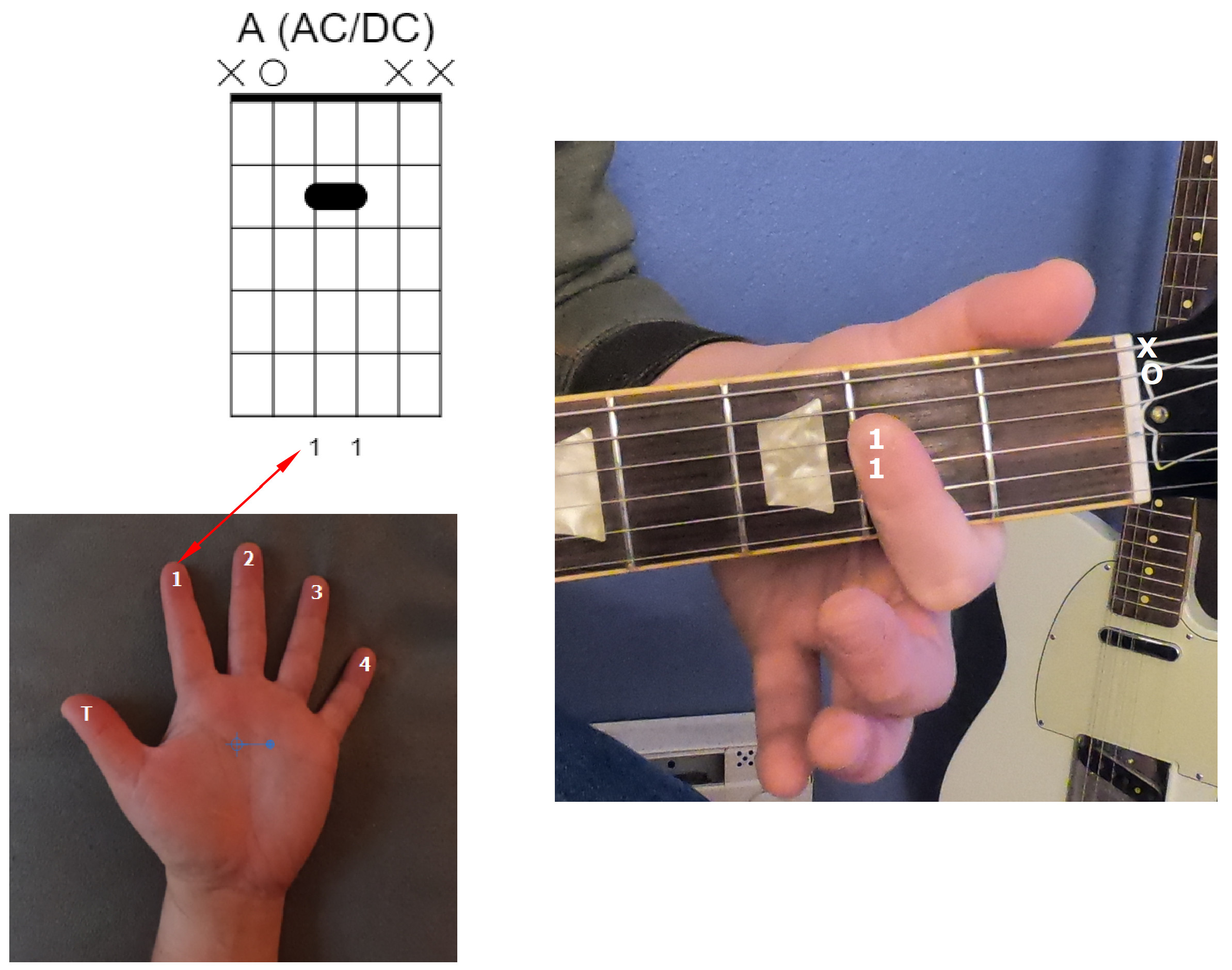 A Power Chord Diagram
A Power Chord Diagram
- E Power Chord:
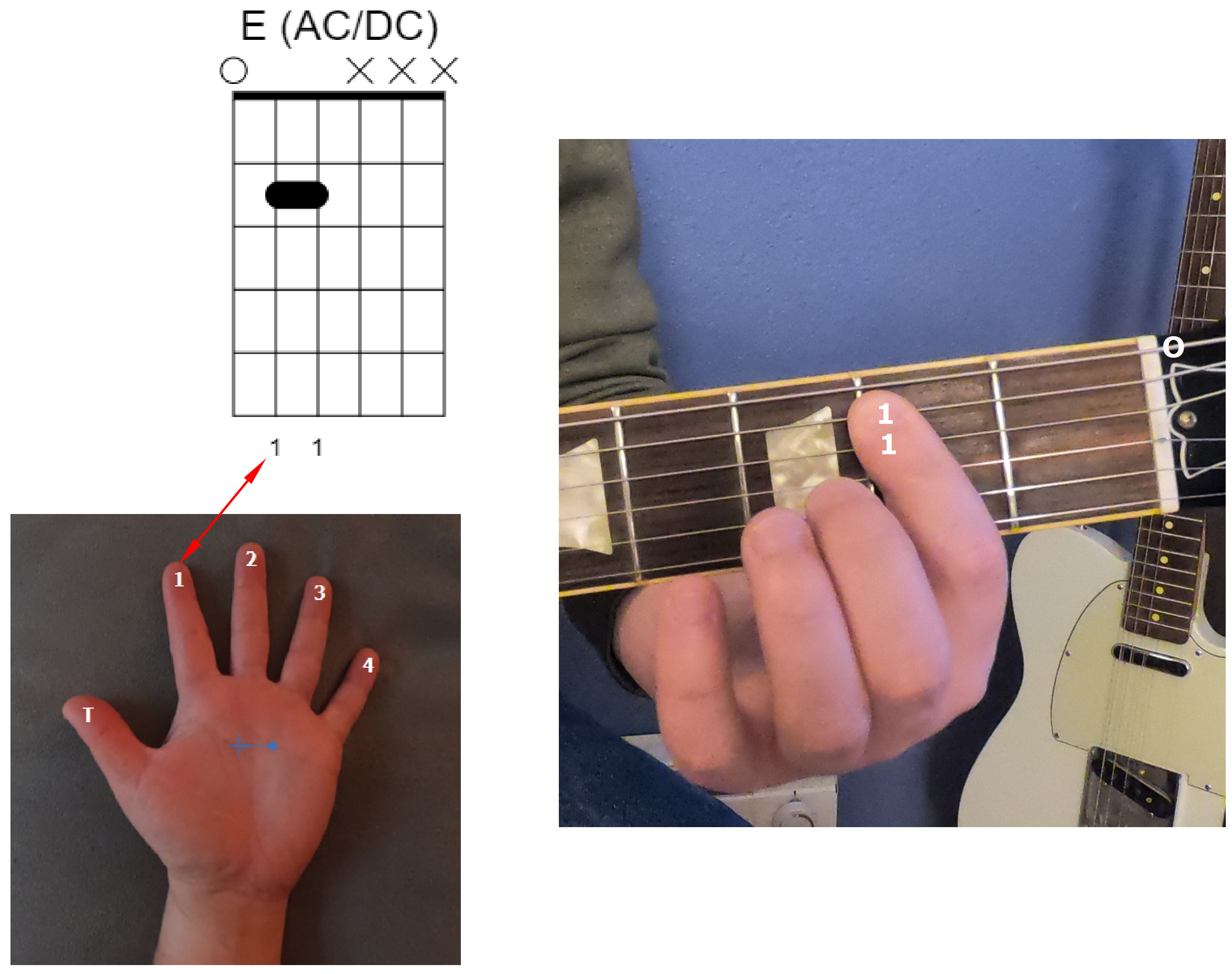 E Power Chord Diagram
E Power Chord Diagram
- B Power Chord:
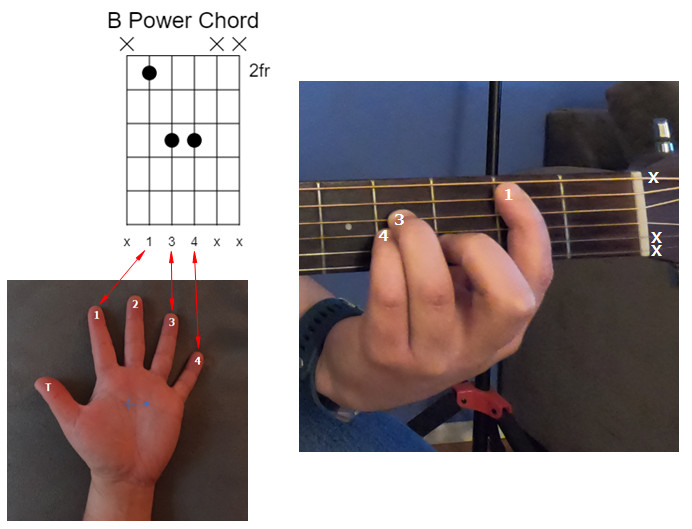 B Power Chord Diagram
B Power Chord Diagram
- G Major:
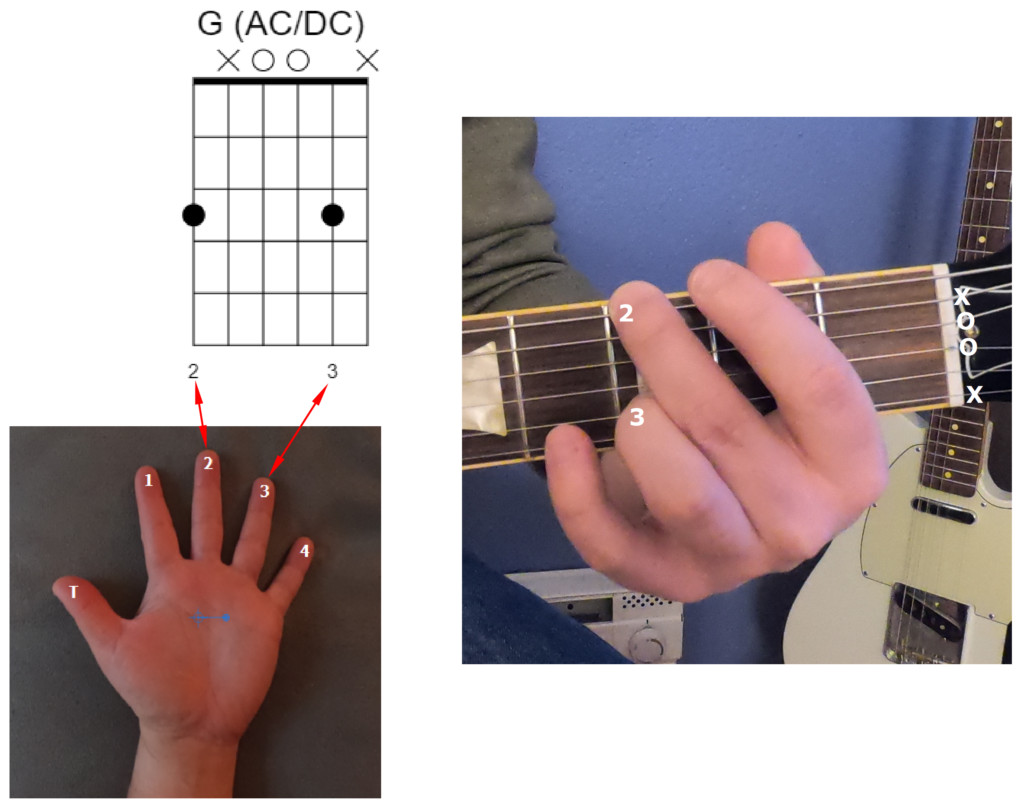 G Major Chord Diagram
G Major Chord Diagram
- D Major:
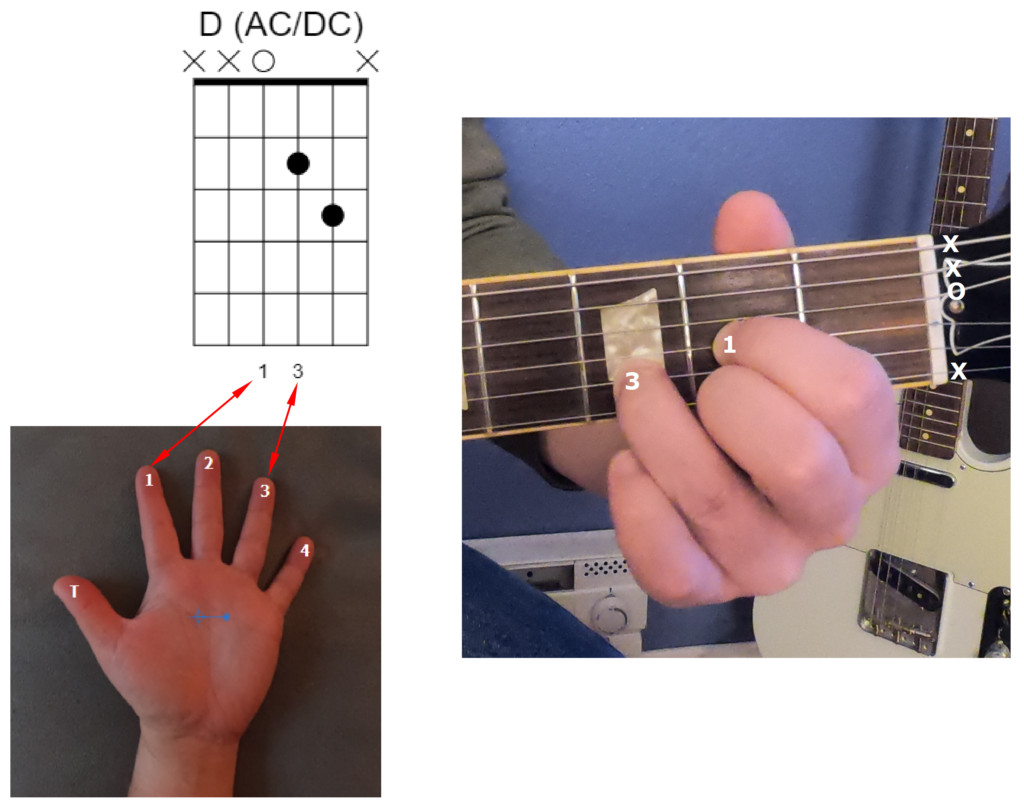 D Major Chord Diagram
D Major Chord Diagram
The chorus progression is more dynamic than the verse, creating a lift and release of energy that makes the song so memorable.
Nashville Numbers: A Quick Theory Breakdown
Nashville Numbers, while originating in country music circles, is a useful shorthand for understanding chord progressions in any genre. Instead of chord names, it uses numbers to represent chords within a key.
In the key of E major for the verse:
- 1 = E Major
- b7 = D Major (the 7th degree of the E major scale flattened)
- 4 = A Major (the 4th degree of the E major scale)
In the key of A major (implied for the chorus):
- 1 = A Major (or A Power Chord in this context)
- 5 = E Major (or E Power Chord)
- 2 = B Major (or B Power Chord)
- b7 = G Major (the 7th degree of the A major scale flattened)
- 4 = D Major
- 1 = A Major
Understanding Nashville Numbers isn’t essential to play “Back in Black,” but it provides a framework for understanding how chord progressions are constructed and how songs move through different keys and chord relationships.
Play Along: “Back in Black” Chord Progression and Song Structure
Now, let’s put the chords together with the lyrics to understand the song’s structure and how the chords fit.
Verse Chord Breakdown with Lyrics
The verse section is straightforward and repetitive, making it easy to memorize. The chord changes perfectly complement the rhythm and phrasing of the lyrics.
E
Back in black
D
I hit the sack
A
I’ve been too long, I’m glad to be back
Continue this E-D-A progression for each line of the verse lyrics. Notice how the simple chord changes create a driving, bluesy feel that underpins the vocal melody.
Chorus Chord Breakdown with Lyrics
The chorus explodes with energy, utilizing power chords and a more dynamic chord progression.
A E B
‘Cause I’m back
A E B
Yes, I’m back
G D A
Well, I’m back
G D A
Yes, I’m back
A E B A E B
Well, I’m back back
G
Well, I’m back in black
D
Yes, I’m back in black
This chorus progression is more involved than the verse, creating a powerful lift. Practice transitioning smoothly between the power chords and open chords to maintain the energy and momentum of the chorus.
 Back in Black Chorus Chord Progression Diagram
Back in Black Chorus Chord Progression Diagram
Rock On! You’ve Learned “Back in Black” Chords
Congratulations! You’ve now learned the essential guitar chords to play “Back in Black.” With practice, you’ll be able to nail the verse and chorus chord progressions and start rocking out to this timeless classic.
To further your guitar journey, explore more beginner-friendly classic rock songs. Consider tackling Creedence Clearwater Revival’s “Fortunate Son” for more open chord practice, or Blue Oyster Cult’s “(Don’t Fear) The Reaper” for a different rock flavor. These songs, like “Back in Black,” are built on foundational guitar techniques and are incredibly rewarding to learn.
Keep practicing, explore more lessons on guitarplayers.net, and don’t hesitate to dive deeper into the world of guitar! Let us know in the comments what other songs you’d like to learn, and keep on rocking!

